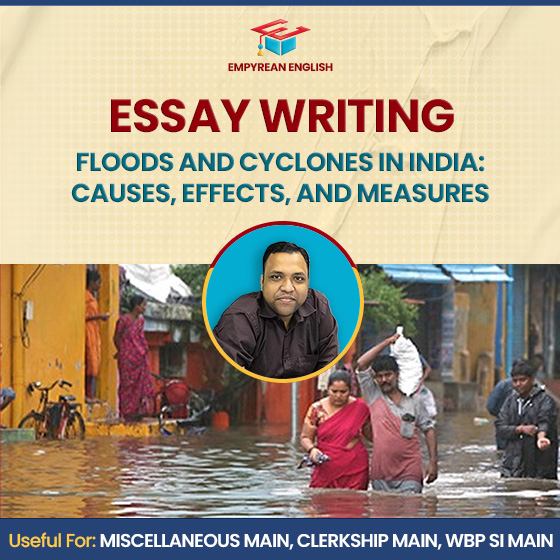“What goes around comes around”, goes the quote. We have been exploiting our nature for several centuries. Now, we can see the aftereffects of that exploitation. The rate of natural disasters has been increasing all over the world, whether they are earthquakes, landslides, etc. Two such natural disasters that we commonly encounter are floods and cyclones.
A flood is an overflow of water on normally dry ground. Our Indo-Gangetic plain is prone to frequent inundation. Other than that, we recently saw severe flooding in Kerala, Tamil Nadu, and Northeast. Floods are mainly caused due to an overflowing river, a dam break, snowmelt, or heavy rainfall. Frequent flooding has caused a great loss of life and property in India.
A cyclone is any large system of winds that circulates about a center of low atmospheric pressure. Owing to its long coastline, India has been often exposed to severe cyclones, especially the states of Odisha, Andhra Pradesh and Bengal, and most recently, Maharashtra. For instance: Amphan, a category five cyclone, had recently hit Bengal.
We might attribute several reasons for the frequent occurrence of these disasters, but the chief cause which has drastically increased their frequency is climate change. There are several measures we can take to mitigate the loss due to these disasters, like technological advancement for timely warning of such disasters, rapid action from government agencies like NDRF during the time of the disaster, etc. But the core solution lies in preserving our nature because no matter how prepared we are, we cannot survive the fury of nature.
আমাদের Objective এবং Descriptive English-এর পেইড ব্যাচে ভর্তি হতে নিচের ফর্মটি পূরণ করুন:


